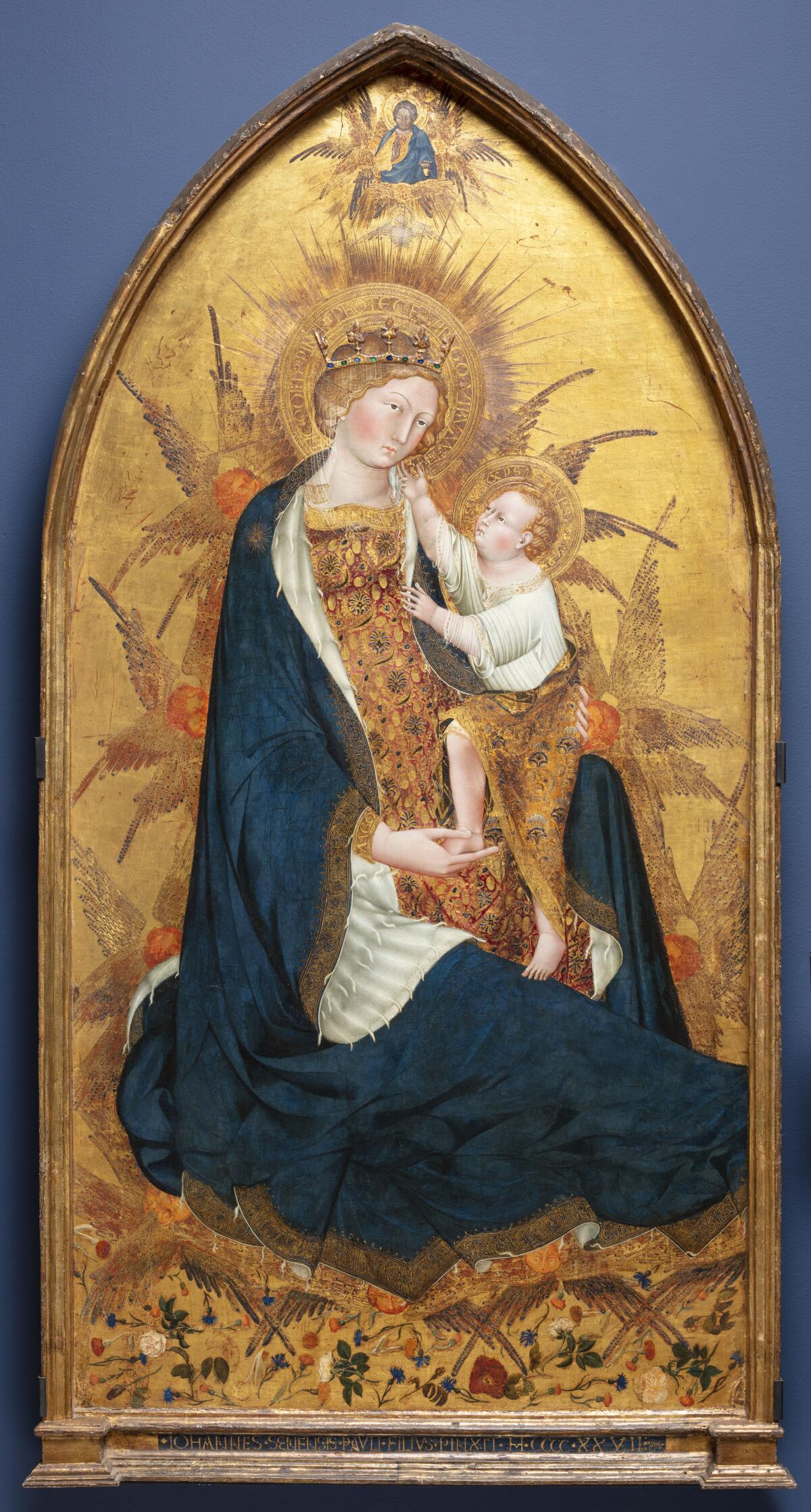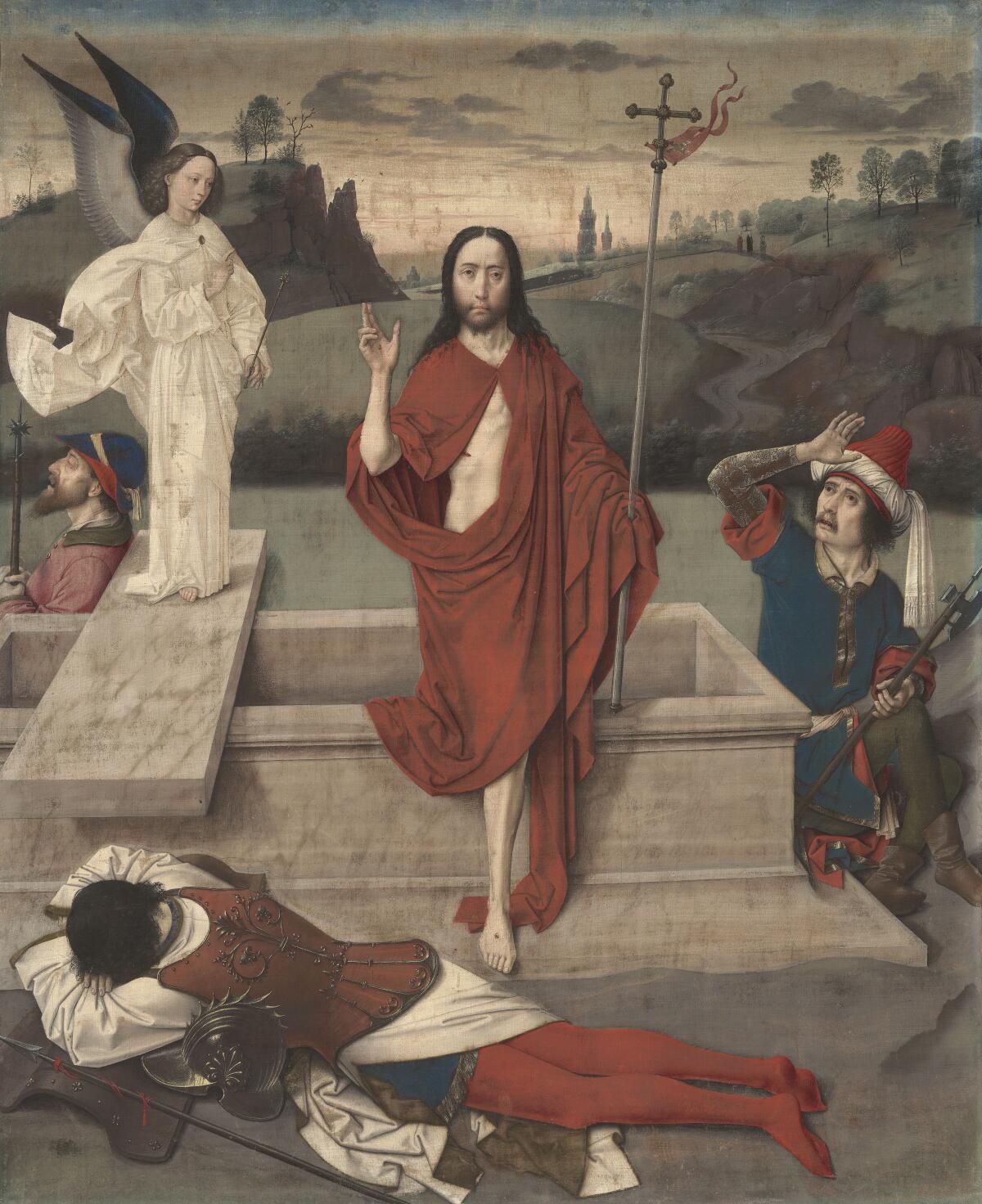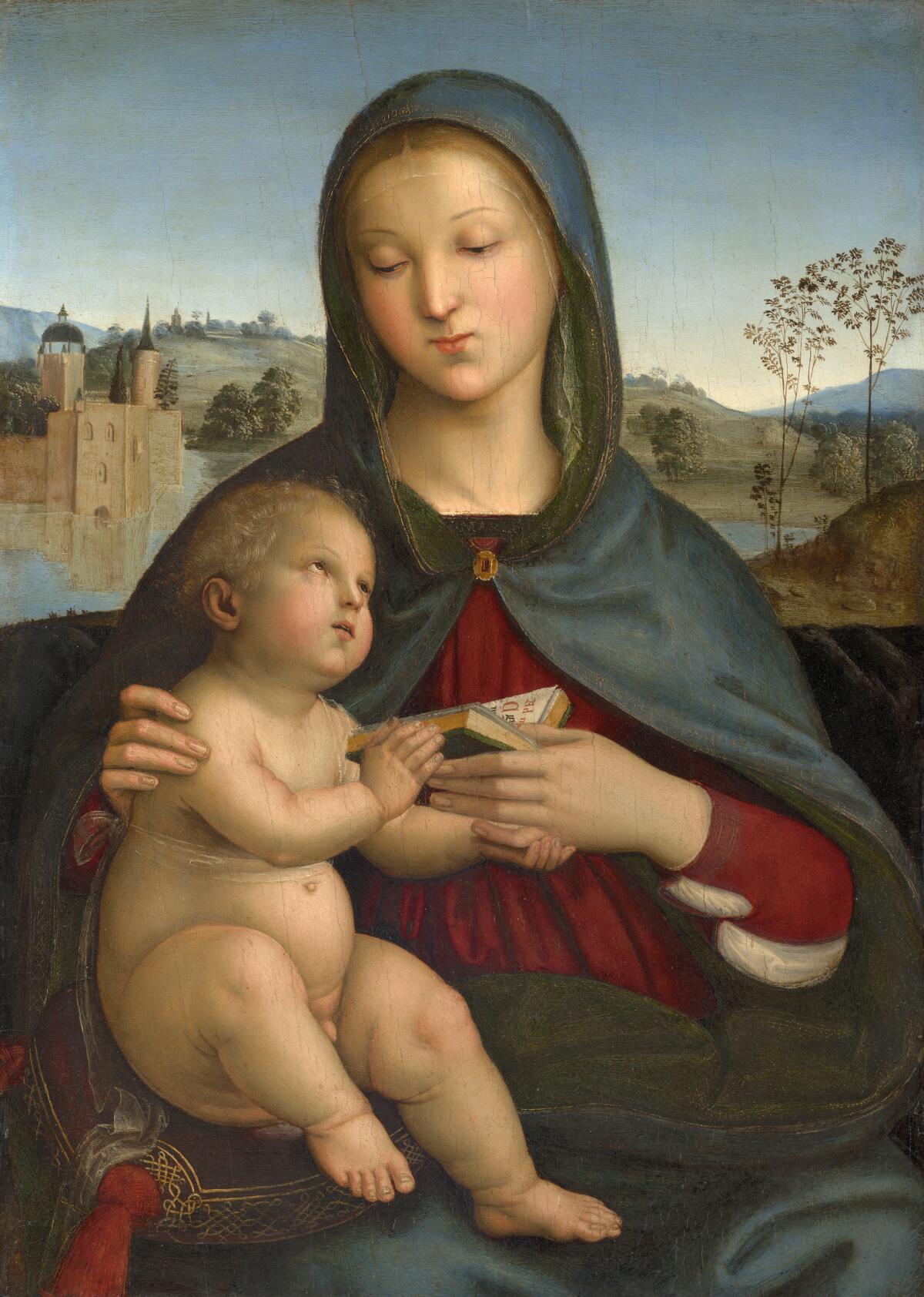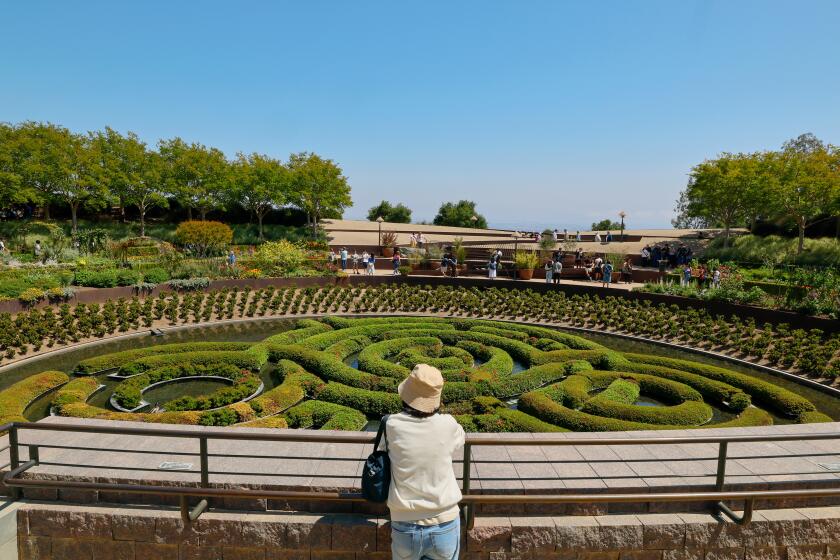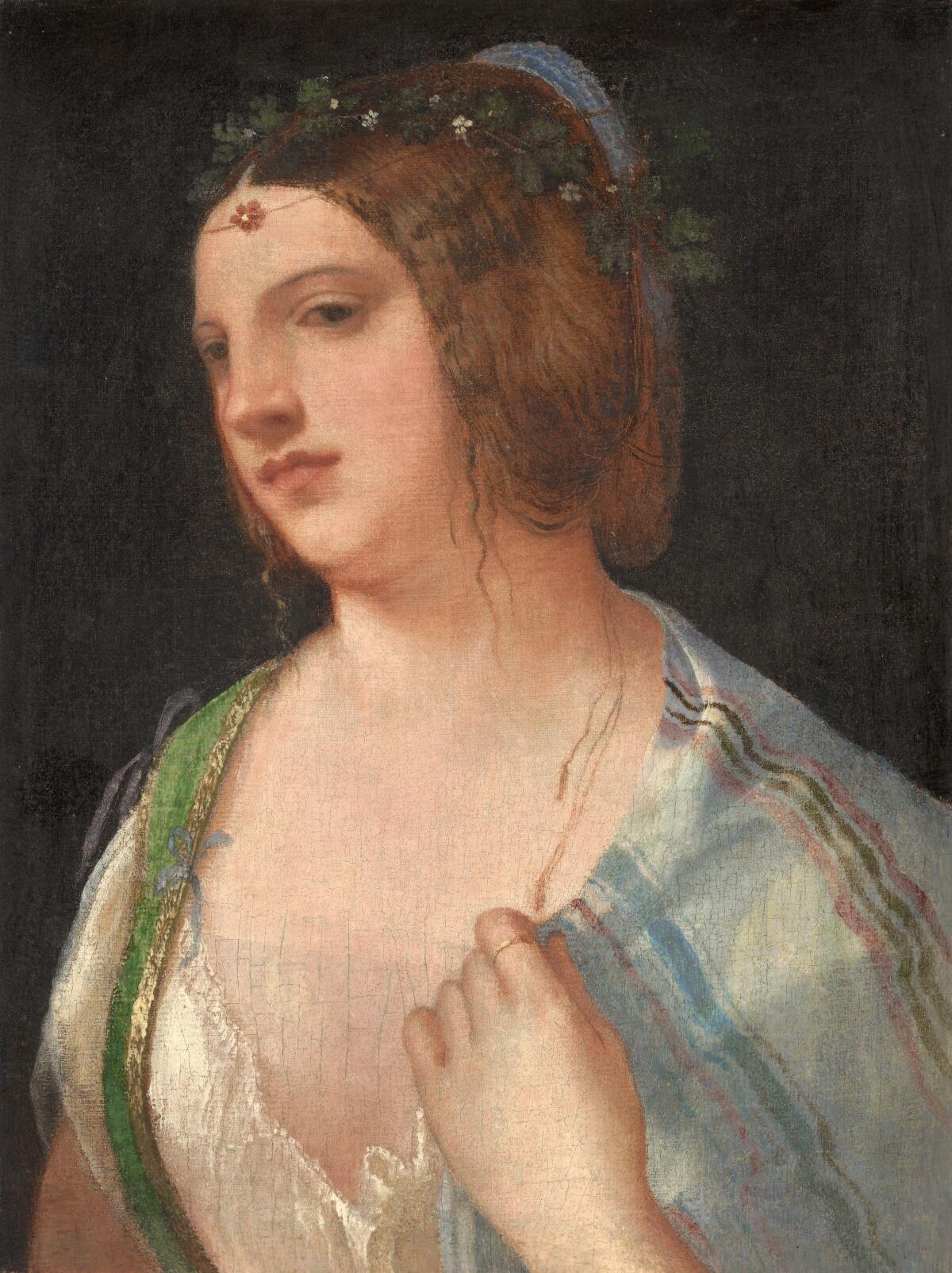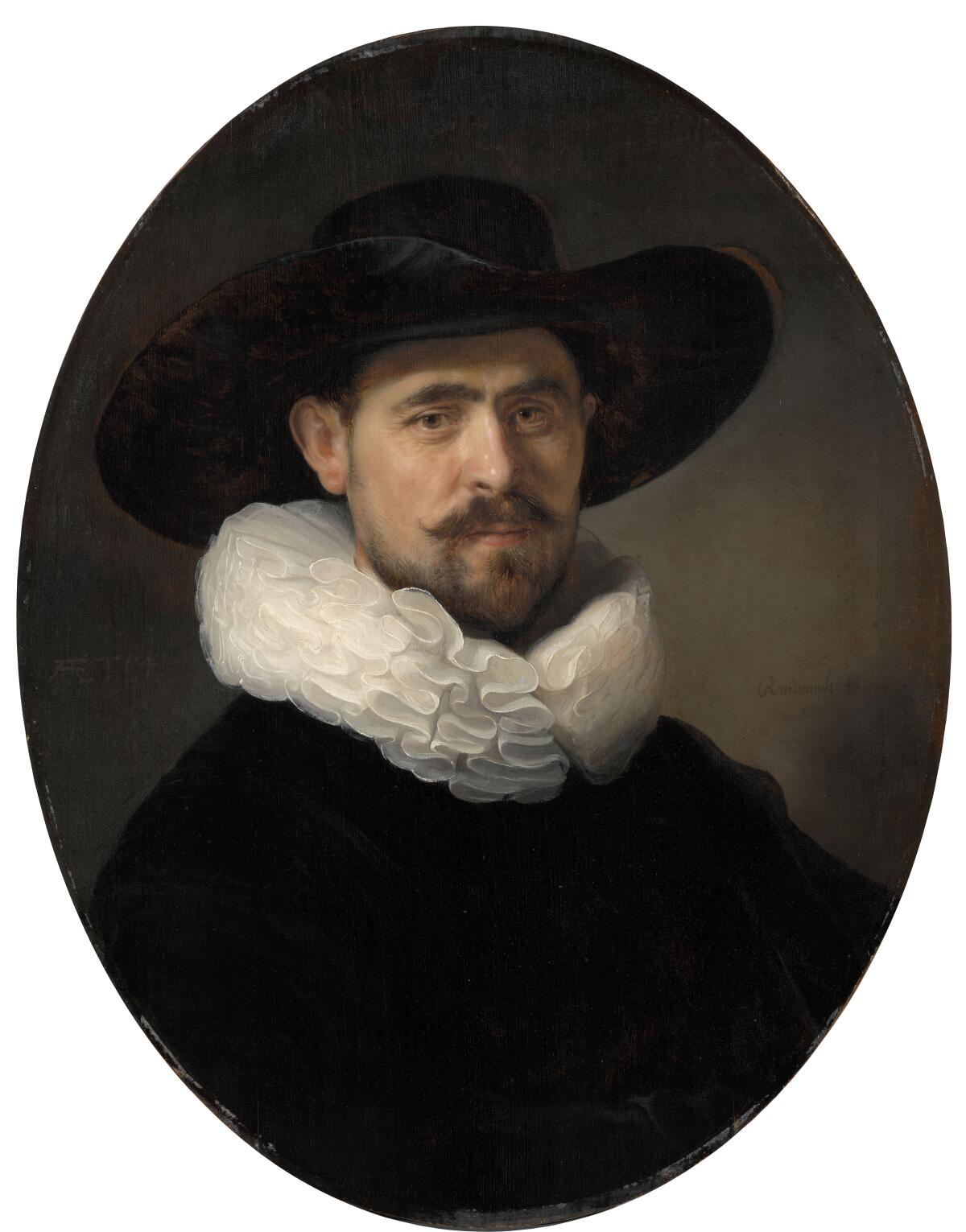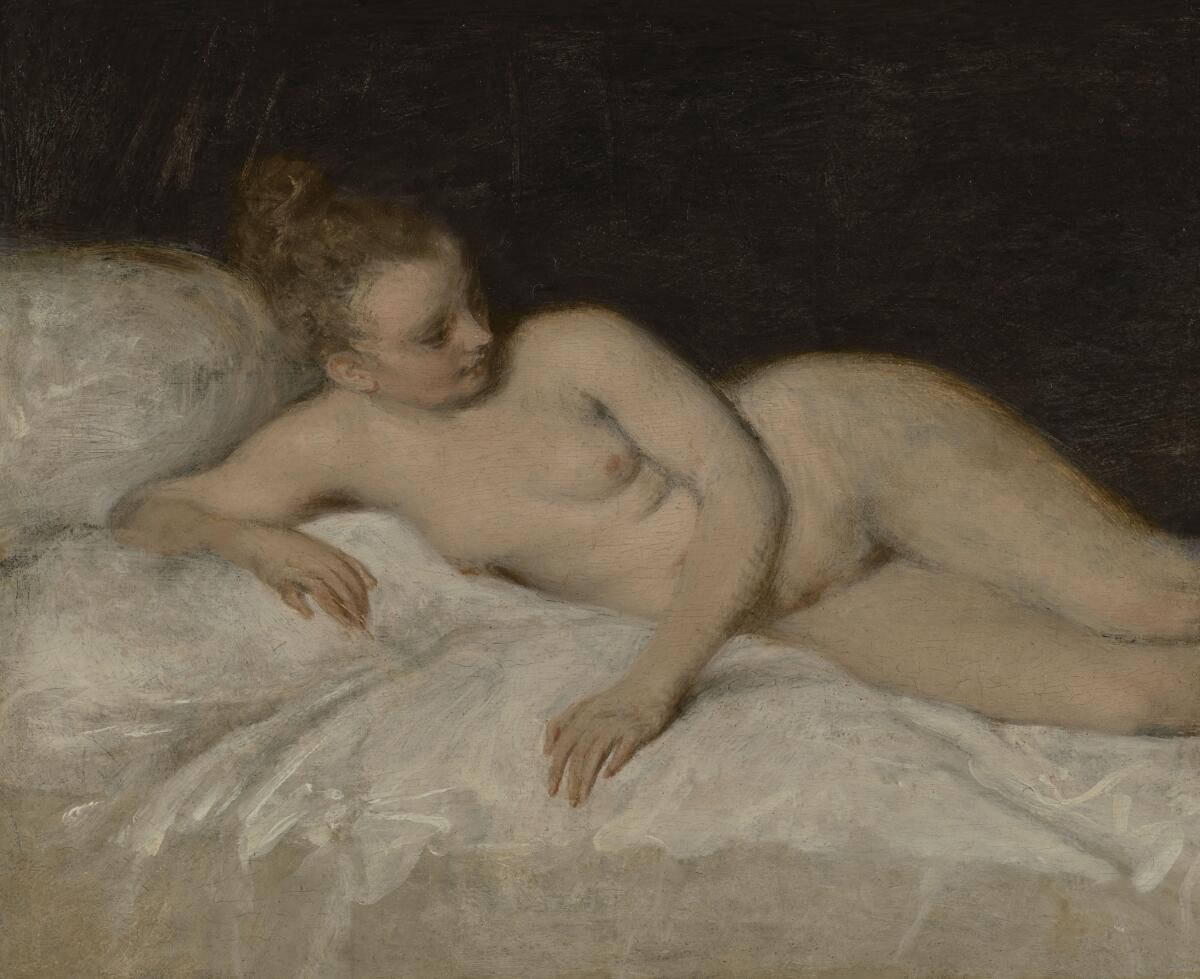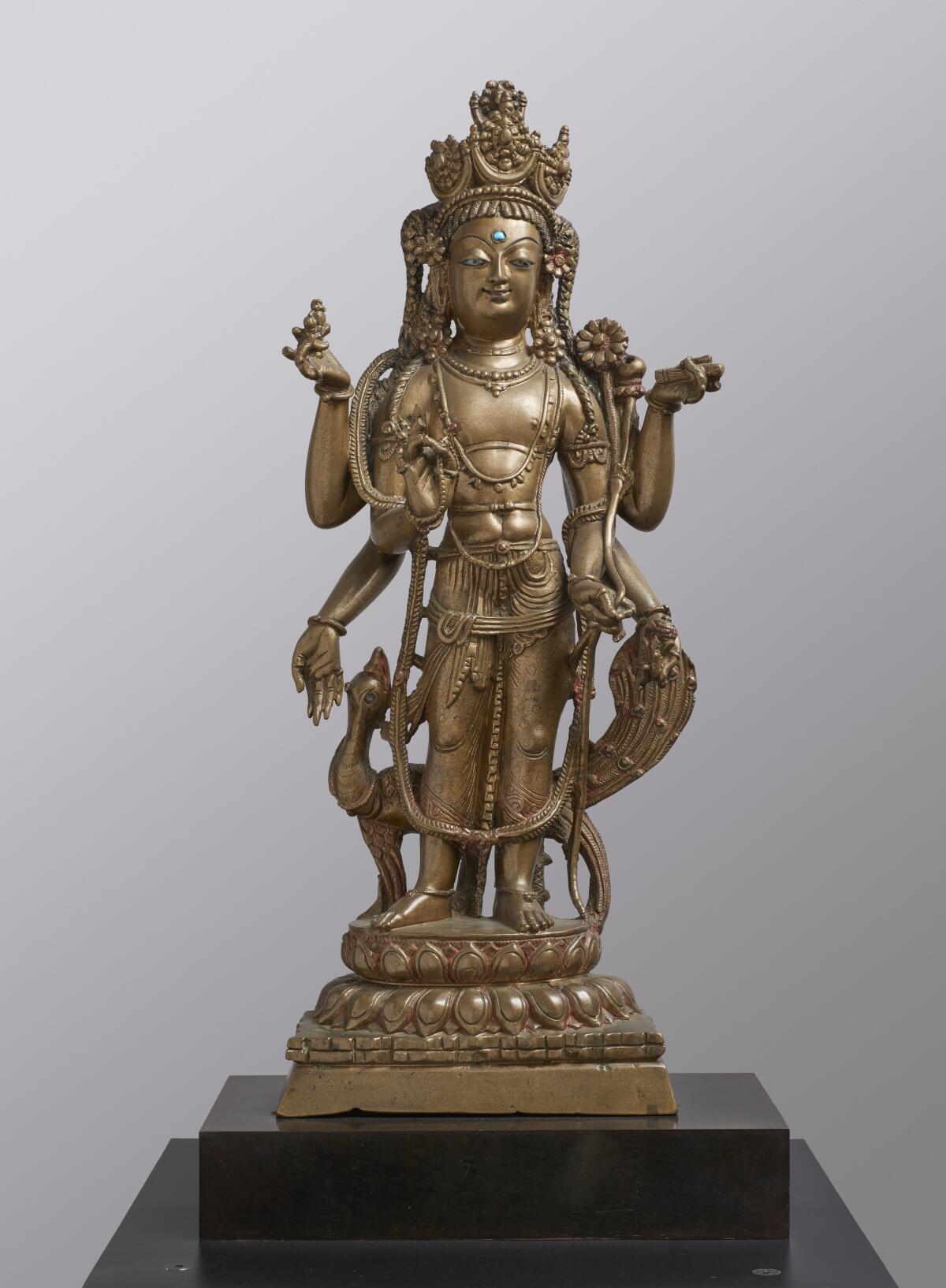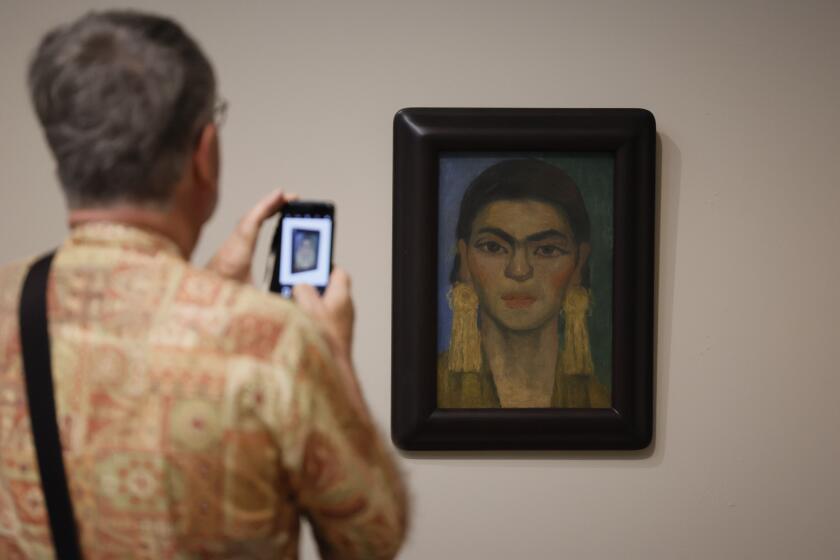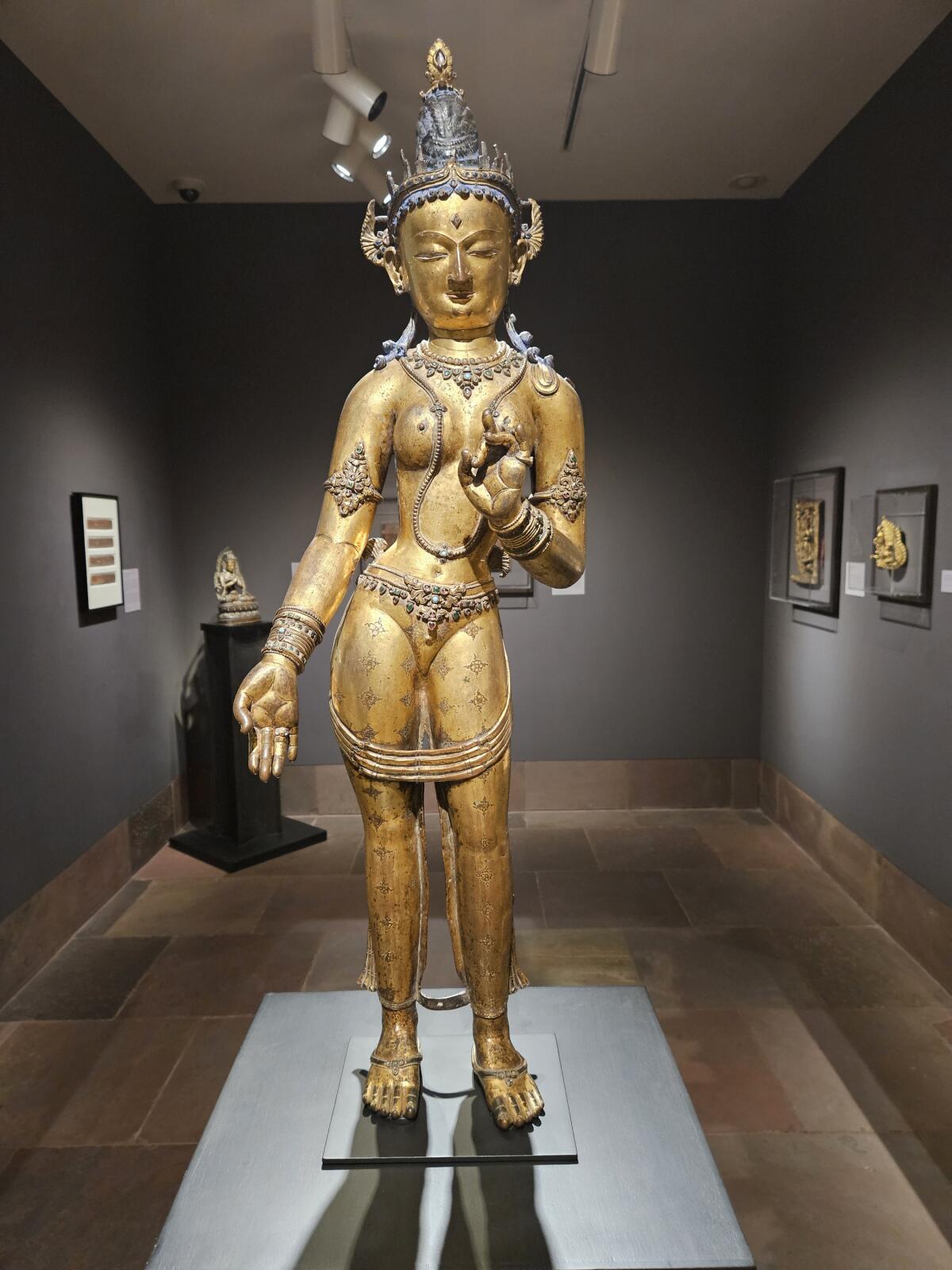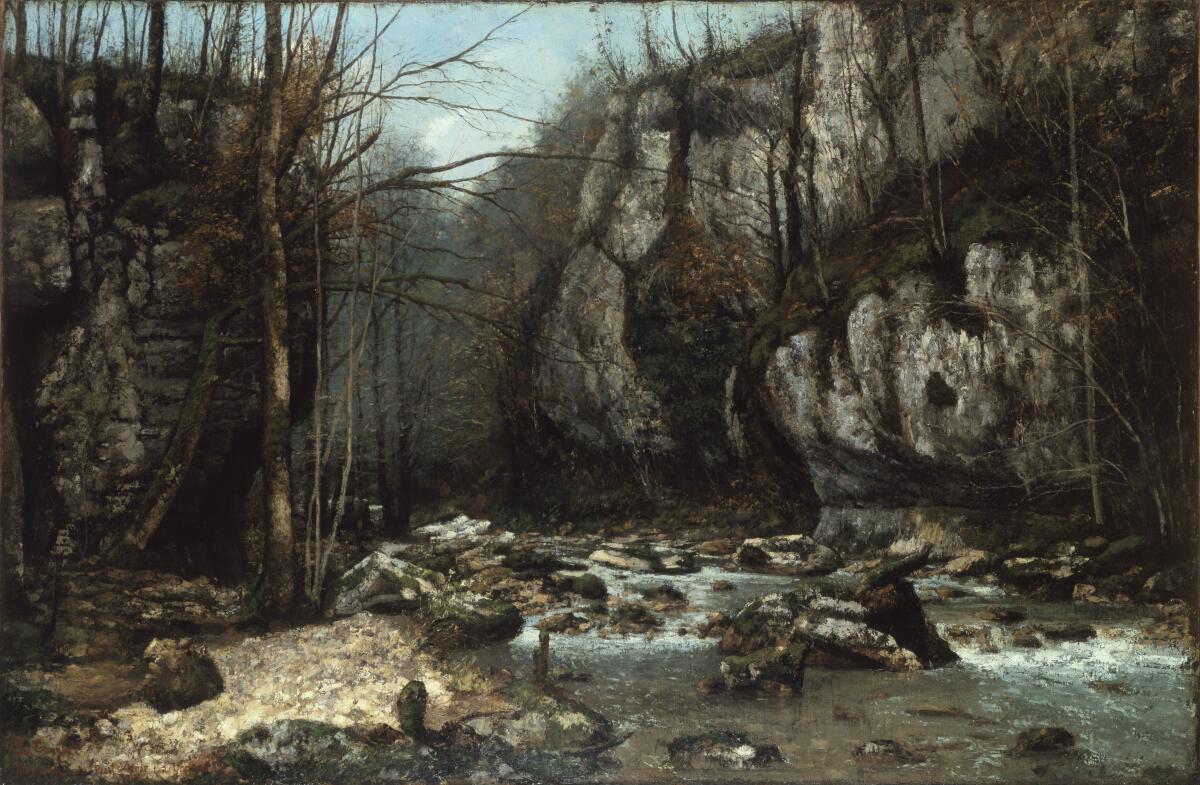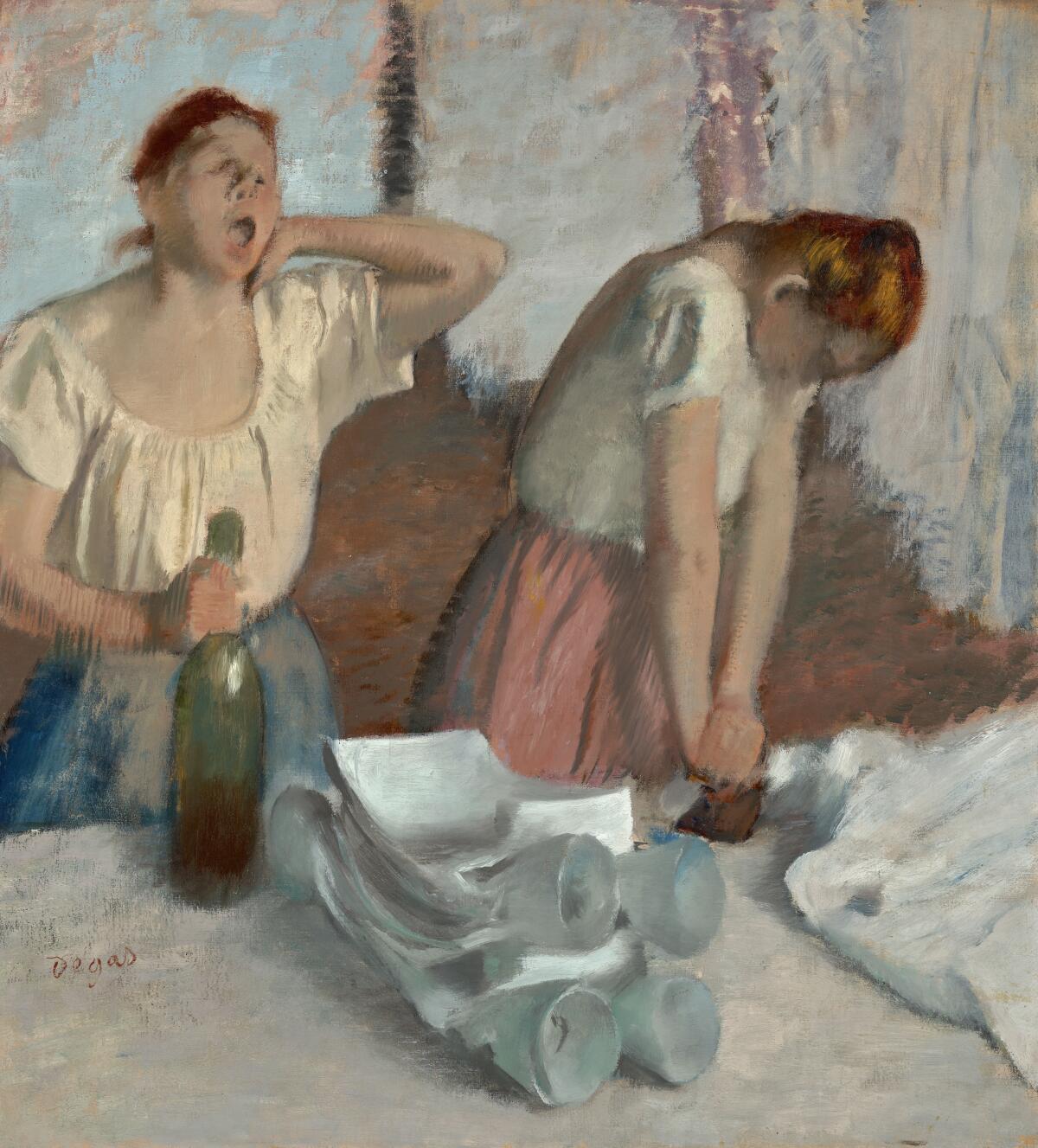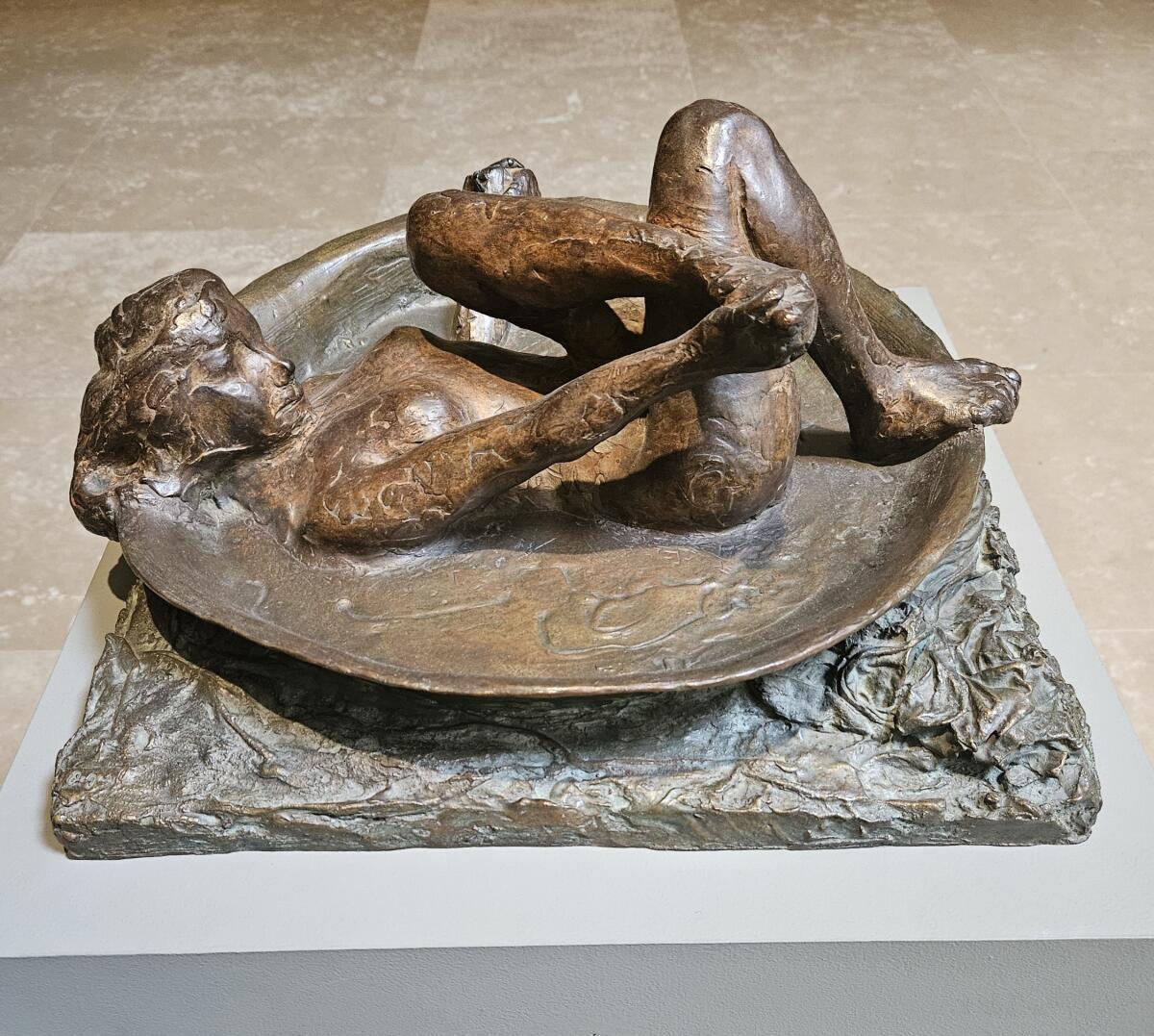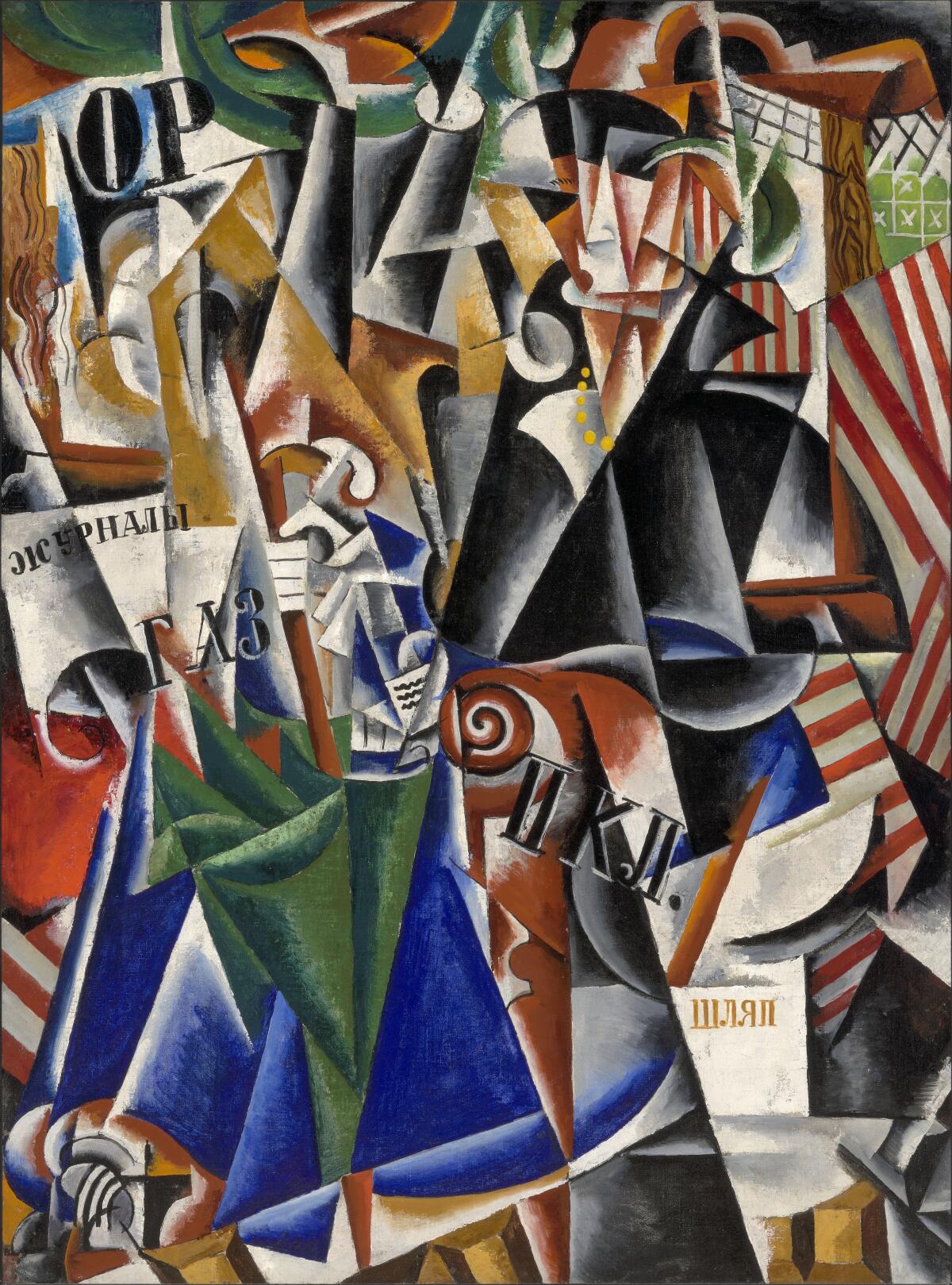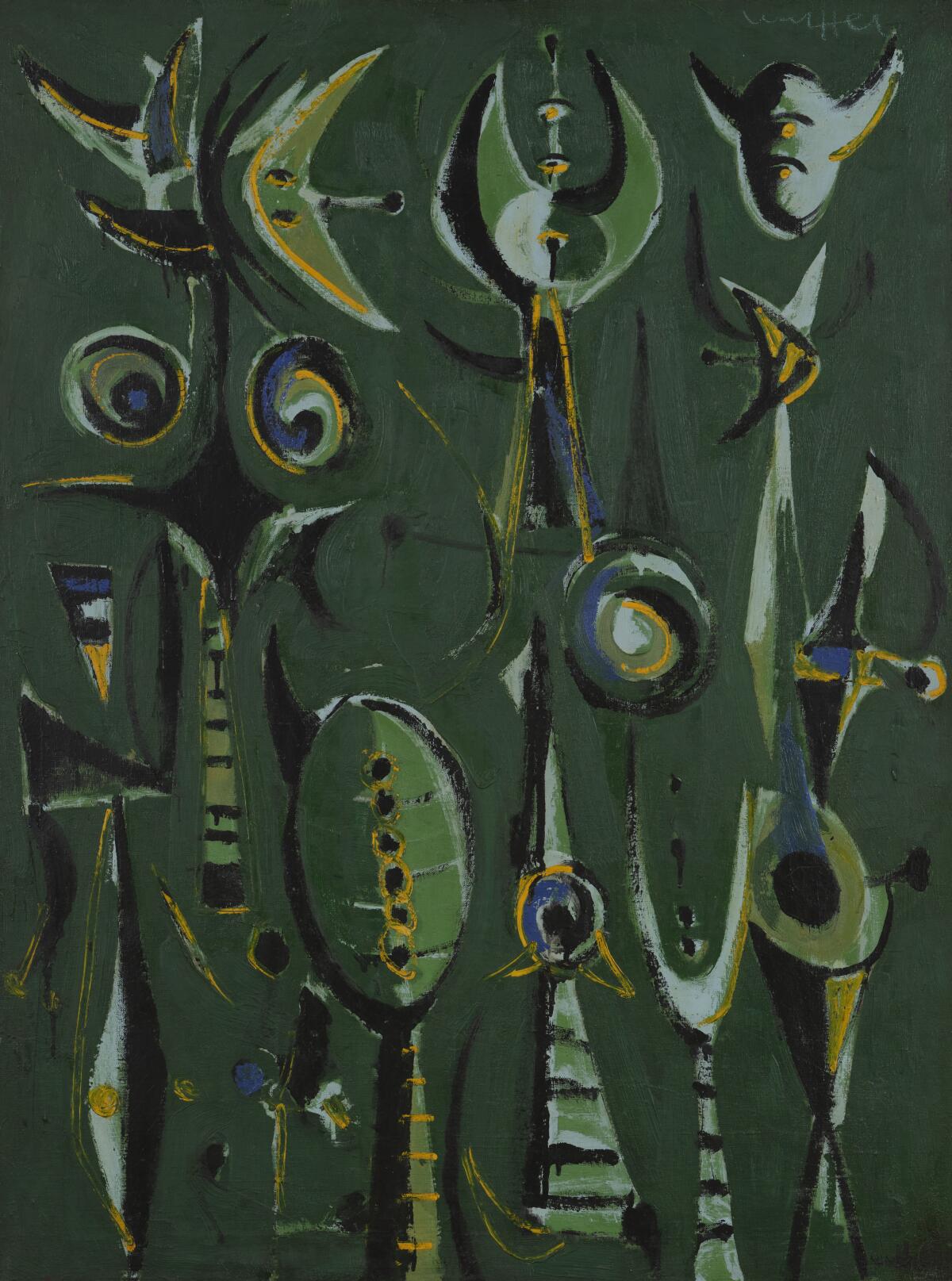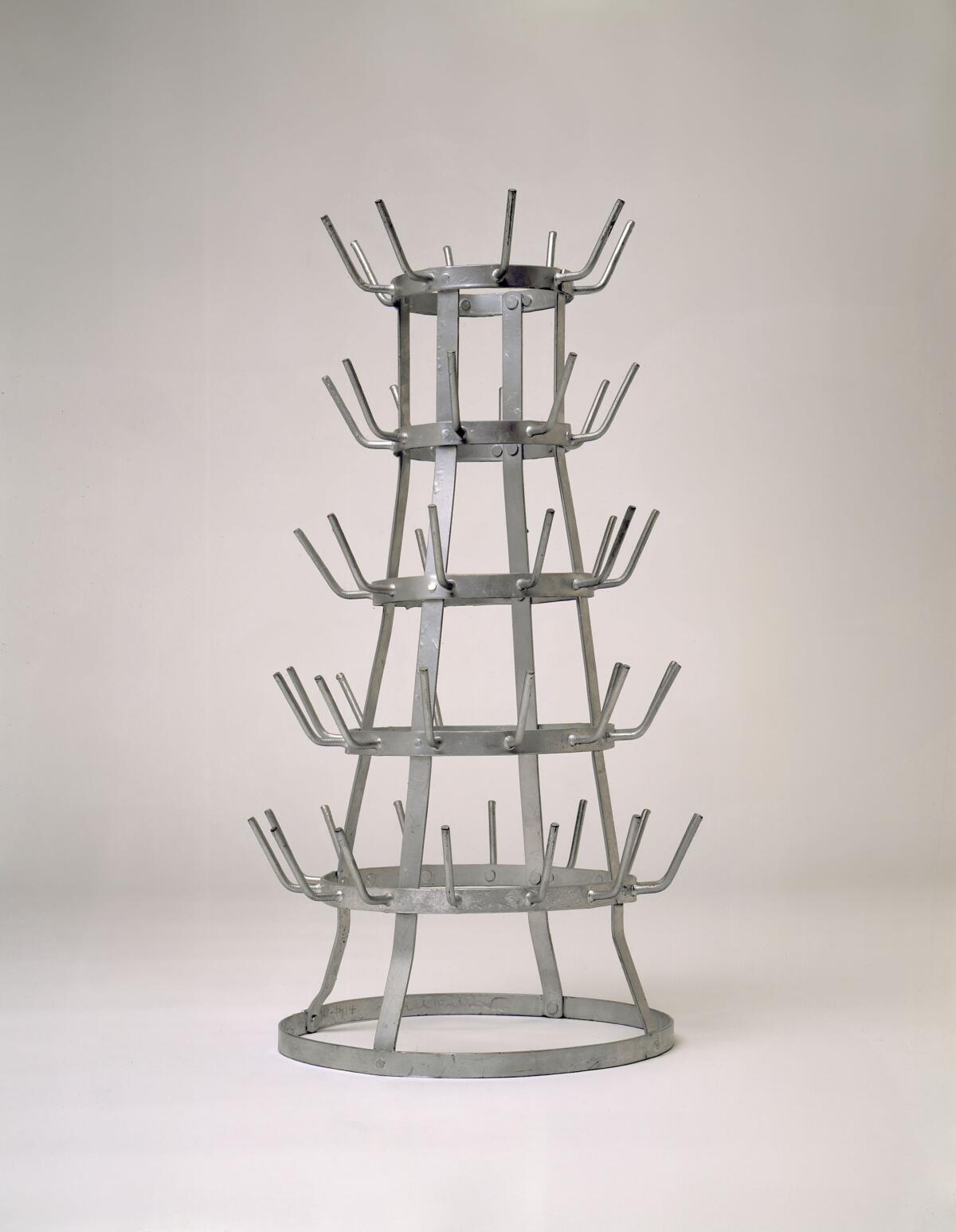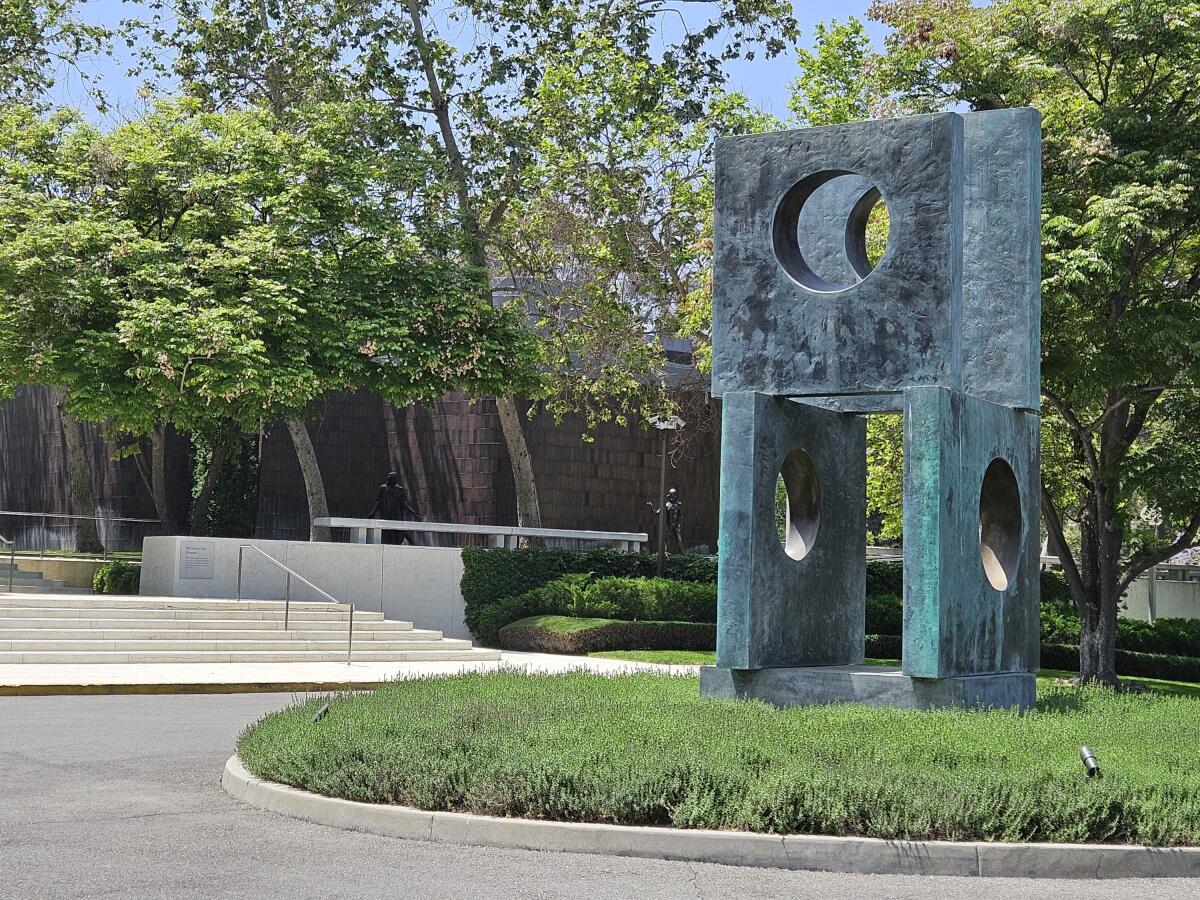Was Manet’s Final Masterpiece Meant to Be a Riddle?
https://news.artnet.com/art-world-archives/bar-at-the-folies-bergere-manet-2520568
 | ||||||||
| ||||||||
Art History
Was Manet’s Final Masterpiece Meant to Be a Riddle? Here Are 3 Facts About His Iconic Bar Scene
'The Bar at the Folies-Bergère' is ripe with tantalizing clues.
Edouard Manet, A bar at the Folies-Bergere. The Courtauld, London (Samuel Courtauld Trust.) ©The Courtauld.
Edouard Manet’s last masterpiece, The Bar at Folies-Bergère, is also his most enigmatic. Painted in 1882, the year before he died, Manet was already in mounting physical decline and the artist knew his end was near. Which is to say, he painted The Bar with intentionality as a final testament. The same year it was created, The Bar was displayed at the Paris Salon. Manet’s history with the Salon was notoriously complex—he had often been rejected and, when his works were accepted, they were usually critically skewered (take for instance Olympia, from 1863, which people tried to attack). But the legacy of The Bar at Folies-Bergère has been enduring, if sphinx-like in its ambiguity. The art historian Griselda Pollock rightly deemed it “one of the canonical images for modernist art history.” But what does Manet’s final masterpiece mean?
The Basics: What Do We See?
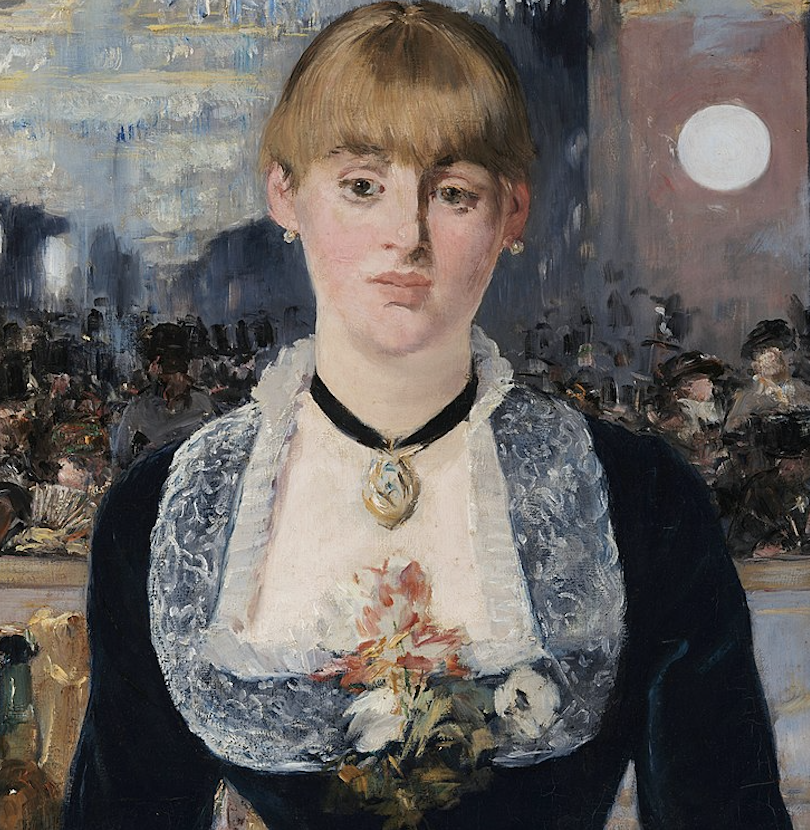
Detail of Manet’s The Bar at the Folies-Bergère (1882)
We might best approach this painting by asking ourselves what we see. The oil and canvas painting, which is today in the collection of the Courtauld Gallery in London, measures 3 feet and 2 inches by 4 feet and 3 inches. A young woman, a barmaid, stands behind a marble counter filled with drinks and a platter of oranges. She turns her arms outward, wrists leaning against the counter. Her expression is inscrutable. She is pale and sculptural in her presence. In another century, this ambiguous heroine might have been carved out of the marble that now forms her glossy work counter. She looks out, her gaze dreamy but direct, out of the canvas and at her proverbial customer; she is, after all, as the title tells us, working at the bar of the Folies-Bergère, an iconic destination of 19th-century Paris nightlife.
Opened in 1869, the Folies-Bergère was a lively venue for trapeze performances and vaudeville and variety theater, and it was famed for the mirrors that lined its walls, creating a magic lantern-like effect.
...
Behind the barmaid, so much of the composition unfolds in the reflections captured in these mirrors. There we see a crowd of men in black top hats and women with opera glasses, painted in phantasmagoric, Impressionist flickers. The excitement and energy of the patrons are counterbalanced by the cool poise of the barmaid.
The mirror, however, is also a place of unreality. In the reflection on the right of the canvas, a gentleman in a top hat seems to lean imploringly, seriously, toward the woman at the bar. In this reflection, she, in turn, seems to lean toward him and is positioned much to the right. These reflections don’t match that which we see in front of us: the barmaid’s central, columnar position.
...
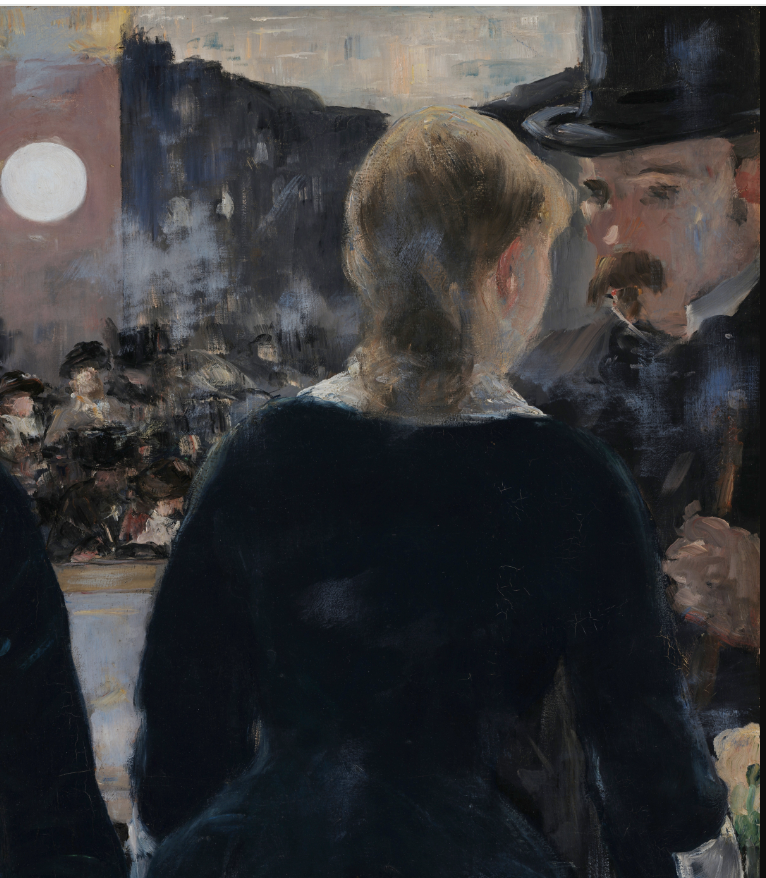
Detail of Manet’s The Bar at the Folies-Bergère (1882)
Much has been postulated about this torrent of confused reflections. Famed art historian T.J. Clark set the stage for many further interpretations of the work when he devoted a chapter to it in his book The Painting of Modern Life. In Clark’s interpretation, the painting signaled—in its meaning and its distorted reflections—the dawn of a new social order under capitalism. This new order, Clark argued, upended time-honored roles and social dynamics and offered a paradoxical, topsy-turvy world of mirrors, as disorienting as the reflection in Manet’s painted scene.
Clark, along with many other scholars, surmised that the painting acted as a visual double entendre, that while she was selling the delectables of liquor and fruit on the counter, the mirrored vision hinted that she might also be available to be purchased herself, as yet another consumable entity. Indeed, she might have been a courtesan, the red blossom at her bosom a common indicator of a woman on the market. Manet, too, habitually associated oranges with prostitution, which here are piled high on the counter. The poet Maupassant had described the barmaids of the establishment as “vendors of drink and of love.”
But there’s much more to The Bar at the Folies-Bergère than solicitation and the ever-elusive image, Manet’s parting gift, is still ripe for interpretation.
Here, we’ve parsed the literature to find three insightful facts about The Bar at the Folies-Bergère that might help you see it in a new and exciting way.
1. It’s a Commentary on Consumerism—and the Art Market
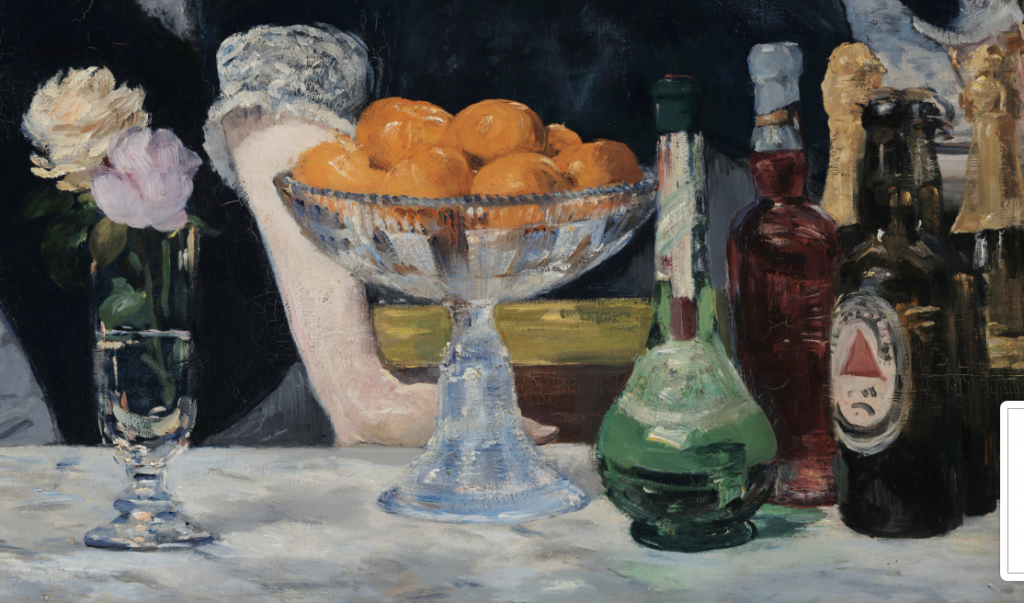
Detail of Manet’s The Bar at the Folies-Bergère (1882).
Manet paints his viewers on the same side of composition as her male customer, and her eyes meet not his but the viewer’s. This construction is intentional; Manet is positioning us as buyers in the age of nascent consumerism. The Industrial Revolution had set in motion a world with mass-market goods, unlike the one-of-a-kind world that had existed before. The actual consumer exchange, between the sales girl and a customer, is often skated over in historian’s contextual notes. In her essay “Selling, Seduction, and Soliciting the Eye: Manet’s Bar at the Folies-Bergère,” author Ruth E. Iskin points out, however, that Manet places consumption front and center for good reason—and that in doing so he hints back to art’s status as a consumer item.
First, Manet does this by painting a sensuous still-life arrangement tantalizingly near the edge of the canvas; the marble slab of the counter pours to the edge of the canvas, where bottles of beer, champagne, and fruits are rendered with delectable care. It’s important to note that the late 1800s saw the dawn of the department store and a new art of sales display. Fascinatingly, the space of the Folies-Bergère had originally opened as a home goods store, specializing in bedding, with an attractions room in the back, to attract customers. Ultimately the entertaining space proved more lucrative and the whole space was converted into a full-fledged theater.
Meanwhile, in 1882, Émile Zola’s famous novel The Ladies’ Paradise would be published in serialization. The book famously charts the saga of Octave Mouret, the rapacious entrepreneur who steers his department store, Le Bon Marché, ever higher, and Denise Baudu, an intelligent and conscientious shop girl whose perspective eye brings her to the height of the department store’s power. The book was based loosely on the real department store owner Aristide Boucicaut. As the book describes, everything about a salesgirl’s appearance, from their dress to their hairstyle, would have been selected by an employer to appeal to upper-class tastes—and so would have been the case with Manet’s barmaid. These salesgirls occupied a dubious space, as working women positioned above the working class, and became a new, “petit-bourgeoise.” But as the barmaid’s tired expression might convey—she was still very much at work.
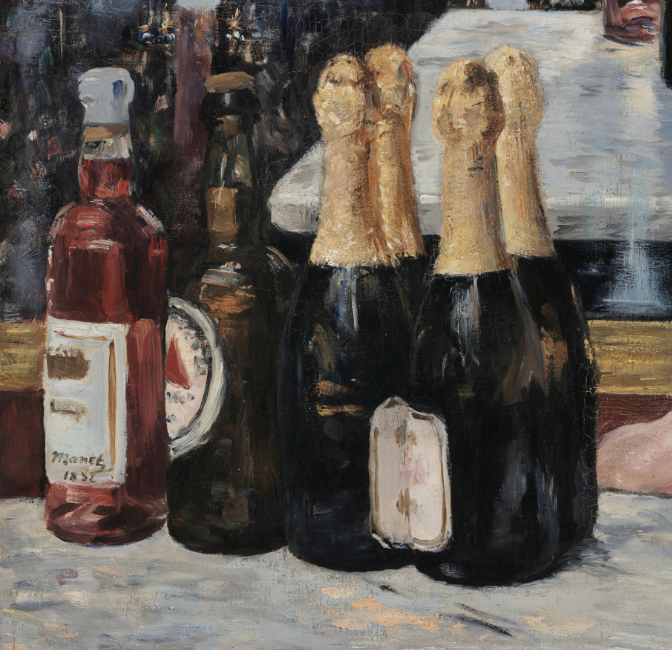
Detail of Manet’s Bar at the Folies-Bergère (1882) showing his signature on the red liquor bottle.
In this painting, many note the presence of a Bass Pale Ale label on the beer, hinting at the new world of mass-available products. Much the same way that commercial objects began to be displayed more openly, so too, art was being sold in ways a previous generation would have found uncouth. At the Salon where this painting would be displayed, an increasing number of works were being offered directly for sale—something that would have been unheard of decades prior. Artworks, too, were hung in storefront windows. In this way, Manet offers himself as another salesperson and his art as something pleasurable to be consumed for a price. Winkingly, even, he signs his name onto a bottle of red liquor, making his signature a logo of sorts.
2. The Mirror Captures a World of Nostalgia and Fantasy
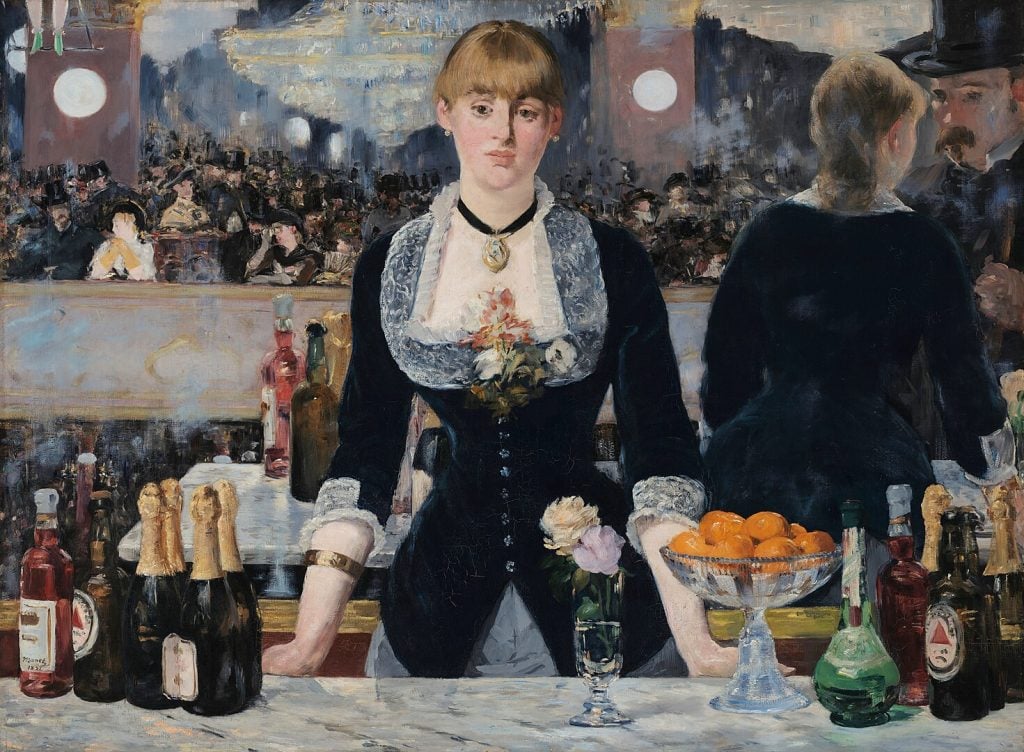
Édouard Manet, A Bar at the Folies-Bergère (1882). Collection of the Courtauld Gallery.
What if the scene unfolding in the mirror’s reflection were not a structural device meant to suggest societal change, but an imaginary space of reverie—a depiction of the barmaid’s mental plane? This interpretation is posited by Albert Boime in his essay “Manet’s ‘Un bar aux Folies-Bergère’ as an Allegory of Nostalgia.” Boime suggests that the encounter in the mirror is a kind of after-image, in which the barmaid imagines an encounter with a gentleman who catches her gaze or a recollection of what has already been. Maybe our barmaid is wondering if the wealthy man approaching the counter might change the course of her life. “Bracing herself against the counter, her reveries have been momentarily interrupted by the flaneur who enters into her field of vision. Her somewhat out-of-focus expression is therefore transitional, held in suspension while she sizes him up,” he writes.
In Manet’s scene, the barmaid is not a vapid flirt but a figure preoccupied with her own hopes and ambitions. “Manet has invested her with a solidity and poise out of proportion to her quotidian role in the class relations of production, freeing her momentarily from her public performance and allowing for her subjectivity—and therefore that of his own as well,” Boime continues.
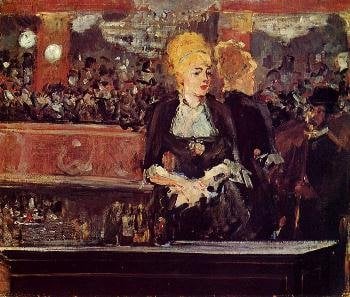
Manet’s preliminary sketch for The Bar at Folies-Bergère shows the barmaid was originally positioned toward the right of the canvas.
For Boime, this nostalgic interpretation is bolstered by the realities of Manet’s deteriorating health. Manet was living in a great deal of physical pain caused by long-term syphilis and painted The Bar while seated, unlike any of his earlier masterpieces.
Manet had been, in his earlier years, a consummate flâneur wandering the streets of Paris and observing the realities of 19th-century life. But his ailment forced Manet into a physical stasis not totally unlike the barmaid trapped behind the counter. His thoughts—like her thoughts—became the primary avenue for escape and exploration. As Boime extrapolates: “As a passerby, he [Manet] does not exist except in the imagination of the barmaid; he lives only in the world of reflections, that is, the dream world generated by capitalist spectacle. Indeed, he writes himself out of the script, so to speak, by effacing himself from the main event.”
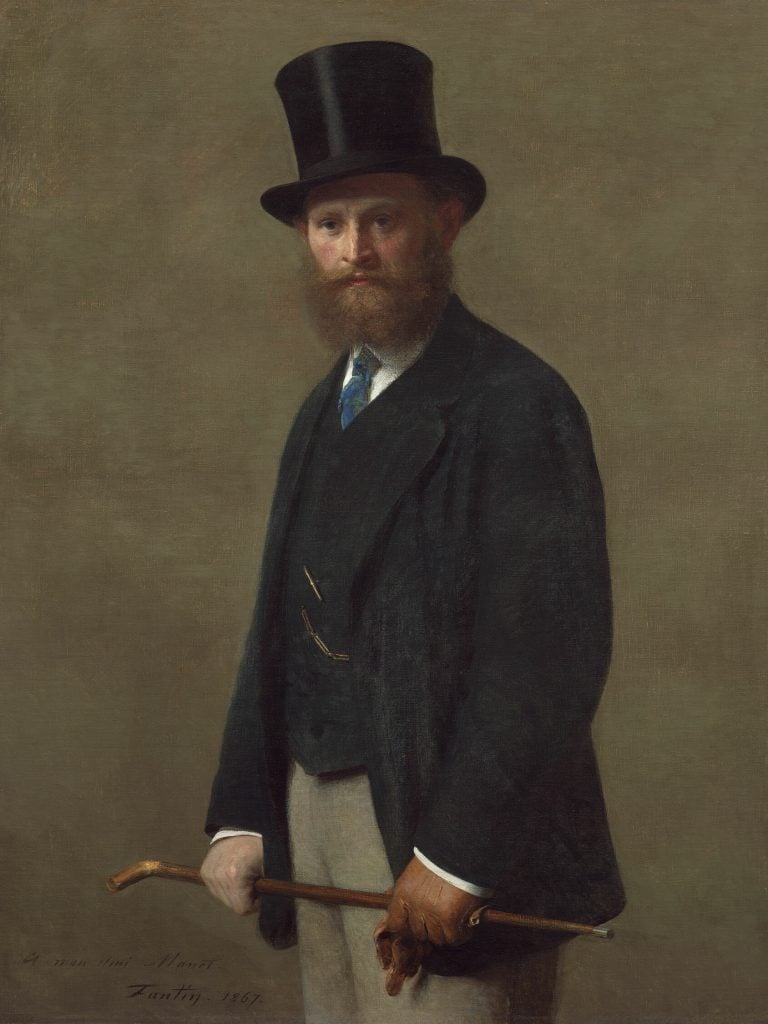
Henri Fantin-Latour, Édouard Manet (1867).
Boime notes that Manet ultimately cedes control of the canvas to the barmaid. In an earlier sketch for the composition, Manet had positioned the barmaid, modeled by a woman named Suzon, to the right of the canvas. In the end, he places her front and center with the man’s reflection off to the side. “She may be considered a flaneuse or female equivalent to the flaneur who gives as good as she gets. Even under the most constraining circumstances, there is a hint of freedom,” Boime concludes.
3. The Odd Detail of the Trapeze Swinger’s Green Boots Is Surprisingly Meaningful
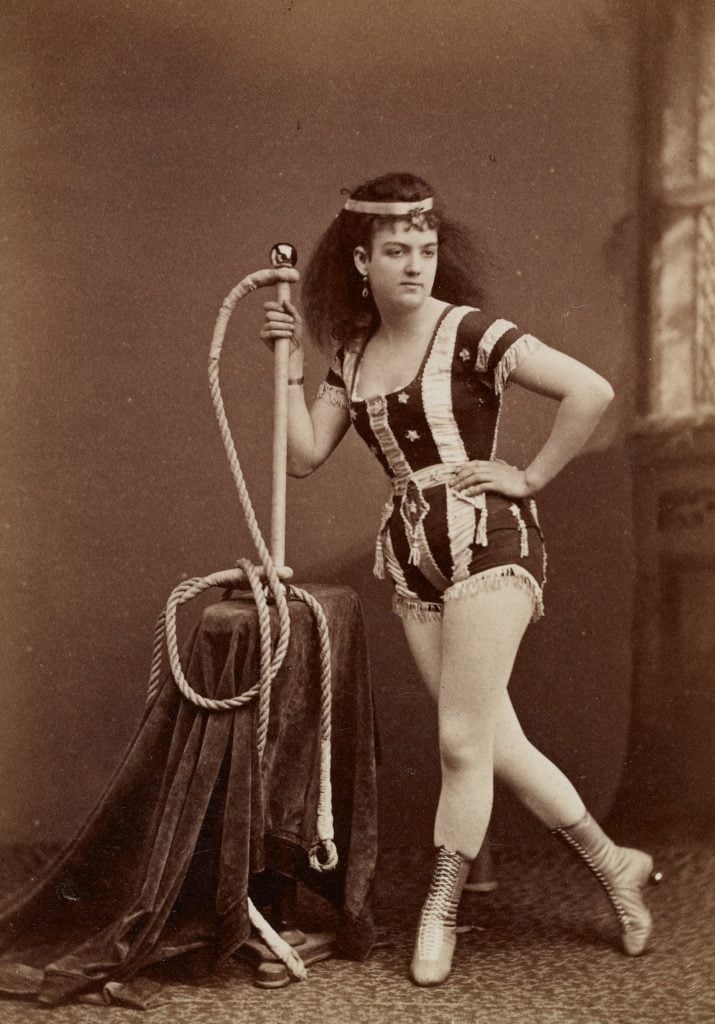
Leona Dare was an American trapeze artist and aerial acrobat. Photo by: Bildagentur-online/Universal Images Group via Getty Images.
Here’s a curious detail: on the upper left of the canvas Manet has painted the green boots of a trapeze artist hanging from above. The trapeze artists of the Folies-Bèrgere, particularly the women performers, occupied a particular position of respect in Paris leisure society. American women performers were particularly in vogue. As Boime notes, “Just prior to the period that Manet conceived his picture, a female trapeze artist from Louisiana, Leona Dare was declared ‘cette nouvelle Reine du trapize’ and electrified audiences at the Folies-Bèrgere with her audacious stunts.”
Manet was certainly aware of Dare and her prowess. She was publicized greatly and “her portrait, surrounded by vignettes of her performing stupendous feats while wearing the laced, high-topped shoes glimpsed in Manet’s picture, displays a face of eagerness and assurance quite different from the tentative expression of the barmaid.”
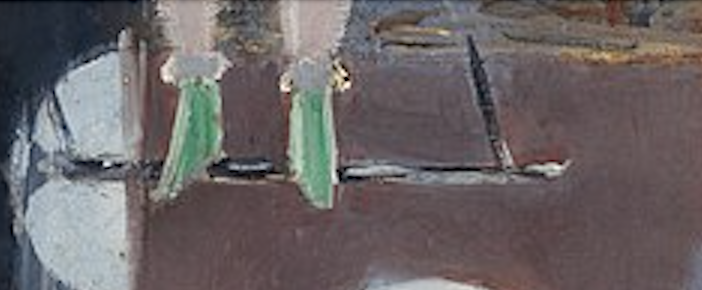
Detail of The Bar at Folies-Bèrgere (1882).
In some ways, this detail hints at the broad social changes brought about by industrialization and, with it, the role of women. While the barmaid offers one of the shifting identities of this era, a “petit-bourgeois” not so readily definable in her dress as belonging to a particular class, the trapeze artist offers another vision of women’s place in 1882 Paris.
Not coincidentally, by the early 1880s, the Folies-Bèrgere was actively recruiting a female clientele, including many respectable ladies who we see in the audience. In this way, the trapeze artists, the barmaids and servers, and the female clientele formed a nexus of possibilities of women watching and being watched as the turn of the century approached.







